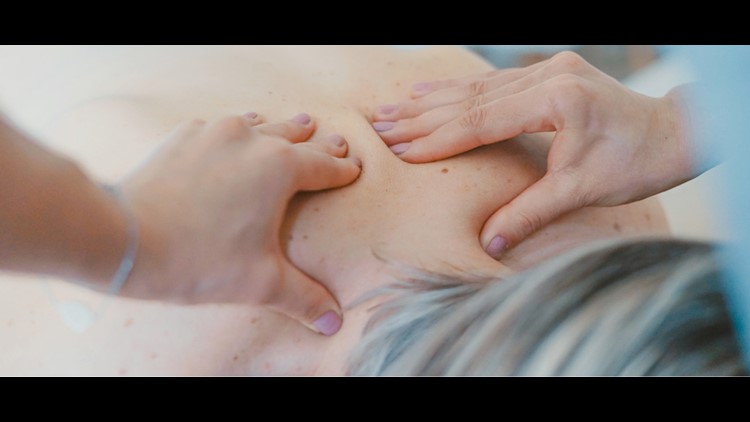Sponsored | Story By: The American Institute of Alternative Medicine
Neuromuscular massage therapy is a specialized form of manual massage in which digital pressure and friction are used to release areas of strain in a muscle. Strain areas are called tender or trigger points, and they tend to be the cause of ongoing muscular pain symptoms.
These trigger points are small areas of the muscle in which there is a contracture of tissue, and the lack of blood and nutrients in that area causes an inability for that muscle to relax.
The area is hypersensitive and can cause pain, fatigue, and weakness in the muscle. Trigger points can lead to referral pain, which refers to a phenomenon in which areas far away from the trigger point experience sensations of pain, tingling or numbness. Neuromuscular massage therapy involves applying alternating levels of concentrated pressure to the trigger point – usually using the fingers, knuckles or elbow.
Neuromuscular Massage vs. Deep Tissue Massage
A deep tissue massage is a form of massage that is generally used to address muscle aches and pains associated with daily stress. Deep tissue massage is usually administered on an on-off basis whenever a client decides they need relaxation and rest.
Neuromuscular massage techniques, on the other hand, are medical in nature. The manual therapy techniques are highly-specialized and are designed to correct pain and movement dysfunction by treating trigger points, muscle adhesions, and connective tissue patterns. The problems are normally caused by a specific trauma, repetitive movements or even bad posture. Neuromuscular Massage is considered an ongoing treatment, and can be used to treat conditions or symptoms such as back pain, knee pain, jaw pain, hip pain, Carpal Tunnel, Sciatica, Plantar Fasciitis, Tendonitis, and headaches.
In addition to treating these symptoms, Neuromuscular Massage can also help to provide higher levels of flexibility and strength, better posture, improved blood circulation, lower levels of body toxins, and increased energy.
Obtaining a Neuromuscular Massage Certification
The American Institute of Alternative Medicine (AIAM) has been offering training and holistic skills for 20 years – making the program one of the longest-running massage programs in the Midwest.
Prospective employers look for a neuromuscular massage specialization when hiring new therapists, and AIAM instructors focus on this specialty. Diane Sater-Wee of AIAM had this to say of the Massage Program: “Using touch you can help anywhere because everyone has muscles - your friends and family, those young or old both abled and differently abled, famous or just infamous. Your hands, your knowledge and your heart are your tools. Becoming a massage therapist can help you to heal the world.”



